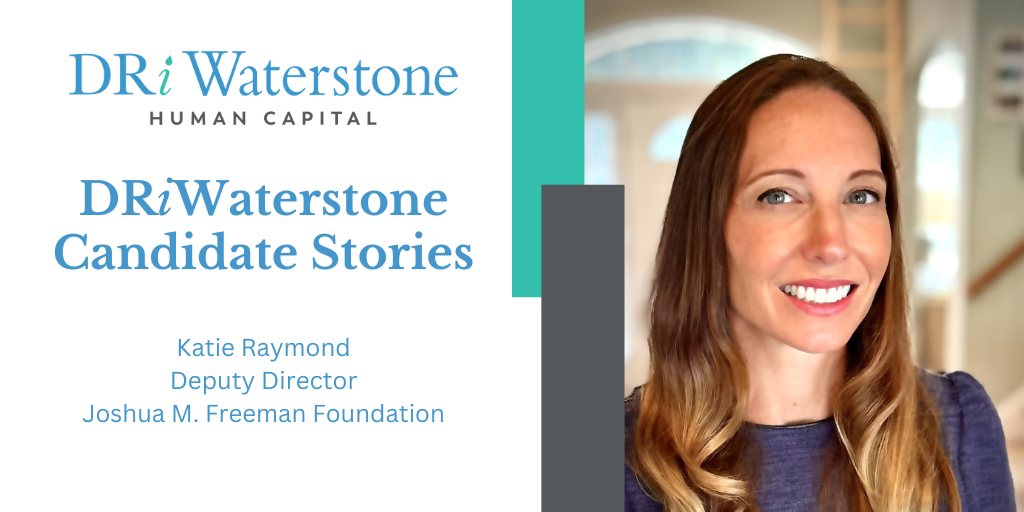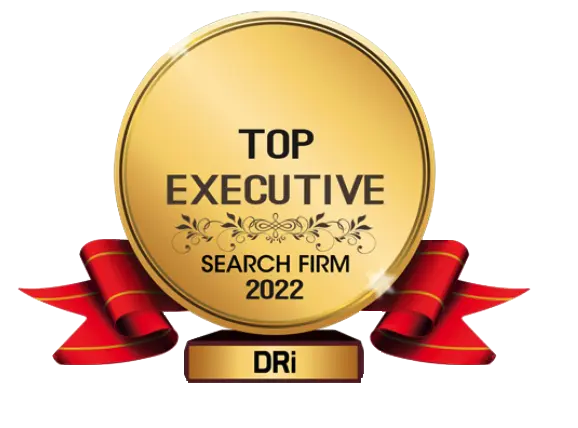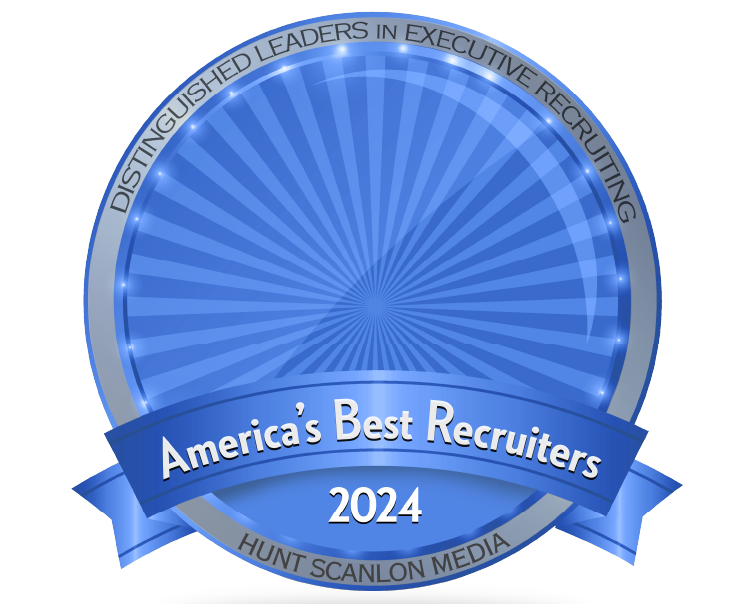We recently sat down with Katie Raymond, who we helped place as Deputy Director for the Joshua M. Freeman Foundation, to learn about her new role, her experience working with the DRiWaterstone team, advice for other executive candidates in today’s job market, and more.
—
DRiWaterstone (DRiW): Can you tell me about the Joshua M. Freeman Foundation and the Freeman Arts Pavillion?
Katie Raymond (KR): The Joshua M. Freeman Foundations creates opportunities to elevate the human spirit. Our mission is to advance access to arts for youth and the entire community through access to performances, education, and advocacy. Specifically, we focus on providing access to the arts to underserved families. The Freeman Arts Pavillion is a magical outdoor venue with incredible and diverse shows and performances—many free.
DRiW: Can you tell me a little bit about your role there as Deputy Director?
KR: I will oversee facility operations, staff, volunteer management, and development, programs in schools, and oversight of the construction of the permanent performing arts facility. I will also help with community and donor relationships.
DRiW: Tell me about your experience working with the DRiWaterstone team as a candidate.
A: It was such a great experience working with the team. They were professional and responsive and took the time to help me understand all the steps in the interview process.
DRiW: What surprised you the most about working with the team?
KR: I hadn’t worked with an executive search firm before, and I really appreciated the extra communication along the way. I felt the team took the time to assess the fit on both sides—the candidate and the organization. I felt like they were there to support me through our check-ins. I got to know the organization’s needs and goals before I started the interview portion, so that was helpful.
DRiW: Talk about the level of support and communication provided by DRiWaterstone throughout the placement process. How did they assist you in navigating the various stages, from initial interviews to negotiations?
KR: Overall, everything was excellent. We spoke on the phone many times, and I felt like I gained a lot of knowledge about the company and its mission. They laid out all the steps that were expected in the process, as well as the general purpose of each stage of the interview process, which made it clear for me. They checked in with me after every interview right away to get my impressions of how it went. When we got to the negotiation stage, it was an incredibly open and comfortable conversation.
As I mentioned, it was my first time working with an executive search firm, so it was nice to have someone acting as the intermediary between me and the organization.
DRiW: What advice do you have for a nonprofit executive candidate in today’s job market?
KR: I think one of the biggest reflections I had during this process is to really take the time to understand the organization and their goals. That way you can tailor your answers during the interview process to highlight how you can help them achieve their goals. Another piece of advice I would give is to work with an executive search firm like DRiWaterstone. I did my own independent research about the company, but it was so helpful for me to have members of the team provide insight and information. As a “non-traditional” candidate, [the DRiWaterstone team] was able to look at my resume, pull out relevant skills and qualifications, and interview me to see that I would make a good executive candidate—and that really helped. I’m not sure if it would have been the same if only my resume was looked at.
—
At DRiWaterstone, we have the pleasure of working with some of the best clients and candidates in the non-profit and social impact space. To learn more about how we can help you build high-performance teams and drive growth, email us – we’d love to talk!
object(WP_Post)#4121 (24) {
["ID"]=>
int(8397)
["post_author"]=>
string(1) "3"
["post_date"]=>
string(19) "2023-09-25 15:55:53"
["post_date_gmt"]=>
string(19) "2023-09-25 15:55:53"
["post_content"]=>
string(5985) "
The non-profit sector is crucial in addressing societal challenges and positively impacting communities. As the torchbearers of social change, non-profit, and social impact organizations must actively seek out and cultivate the next generation of leaders to sustain their missions. This means making succession planning a priority!
When it comes to succession planning, you have two options: identifying and nurturing the next-generation leaders within your organization or attracting them from outside your current workforce. In this blog post, we will focus on five strategies for attracting next-generation talent into your organization.
1. Leverage Digital Tools Including Social Media
Next-generation leaders are digital natives accustomed to seamless technology integration in their personal and professional lives. Organizations must embrace the power of the digital world to attract the next generation of non-profit leaders. Leverage tools such as online job boards like Glassdoor, your website, and social media channels like LinkedIn, YouTube, or TikTok, where you can showcase your organization’s work, impact, and culture. By demonstrating a forward-thinking approach, non-profits can create a digital showcase that aligns with the skills and expectations of emerging leaders—and you're more likely to attract them on platforms they already use.
2. Highlight Purpose and Impact
One of the defining characteristics of the next generation of leaders is their strong desire for purpose-driven work. Whether that means leading an environmental conservation group, advocating for free healthcare, or spearheading changes in government, the next generation of leaders are passionate about social change. Non-profit and social impact organizations have a unique advantage in this regard, as their missions are often deeply rooted in creating positive outcomes for their communities and, in some cases, the world. To attract these leaders, clearly communicate your organization's impact and how each role contributes to the greater good. Use your your website and social media posts to share compelling stories of the lives touched and transformed by your non-profit's efforts, inspiring potential leaders to become an integral part of the journey.
3. Foster Diversity, Equity, Inclusion, and Belonging (DEIB)
Diversity, equity, inclusion, and belonging are not just buzzwords but essential components of effective leadership and organizational success. The next generation of leaders deeply values diversity and seeks inclusive workplaces that honor various perspectives and backgrounds. To attract these leaders, actively promote diversity in your team and showcase your commitment to creating an inclusive environment, whether that takes shape as employee resource groups, DEIB training, continuing education, or initiatives that promote equity and belonging.
4. Support Work-Life Balance
The next generation of leaders value work-life balance and flexibility. When possible, non-profit and social impact organizations can stand out by offering adaptable work arrangements, remote work options, and policies that promote emotional and physical well-being. Flexibility can enhance job satisfaction and help accommodate the evolving needs of up-and-coming talent who may be juggling multiple responsibilities—such as growing families, caring for ageing parents, and more. Creating an environment that meets the business needs of the organization while allowing flexibility to support its people can help your organization attract and retain dedicated, motivated, and committed leaders who can drive long-term success.
In summary, to attract the next generation of leaders, organizations need to leverage digital tools to showcase their work and culture, emphasize purpose and impact, foster diversity, equity, inclusion, and belonging, and support work-life balance through flexible work arrangements and policies that promote well-being (whenever possible).
But what about top talent already in your organization? Keep an eye out for an upcoming blog on how to identify and nurture next-generation talent within your current workforce.
Let Us Help You Attract and Retain the Next Generation of Leaders
For over 25 years, DRiWaterstone Human Capital has been dedicated to matching mission and purpose-driven organizations with top purpose-driven candidates. Our team of experts have developed an extensive network and knowledge of the non-profit and social impact sectors, and we excel in helping our clients find the best possible talent to support their growth and performance goals.
Let’s start a conversation—contact us today to talk to one of our dedicated team members.
"
["post_title"]=>
string(80) "Four Ways to Attract the Next Generation of Non-Profit and Social Impact Leaders"
["post_excerpt"]=>
string(0) ""
["post_status"]=>
string(7) "publish"
["comment_status"]=>
string(6) "closed"
["ping_status"]=>
string(6) "closed"
["post_password"]=>
string(0) ""
["post_name"]=>
string(80) "four-ways-to-attract-the-next-generation-of-non-profit-and-social-impact-leaders"
["to_ping"]=>
string(0) ""
["pinged"]=>
string(0) ""
["post_modified"]=>
string(19) "2023-10-16 19:26:36"
["post_modified_gmt"]=>
string(19) "2023-10-16 19:26:36"
["post_content_filtered"]=>
string(0) ""
["post_parent"]=>
int(0)
["guid"]=>
string(44) "https://dri-single.flywheelsites.com/?p=8397"
["menu_order"]=>
int(0)
["post_type"]=>
string(4) "post"
["post_mime_type"]=>
string(0) ""
["comment_count"]=>
string(1) "0"
["filter"]=>
string(3) "raw"
}





